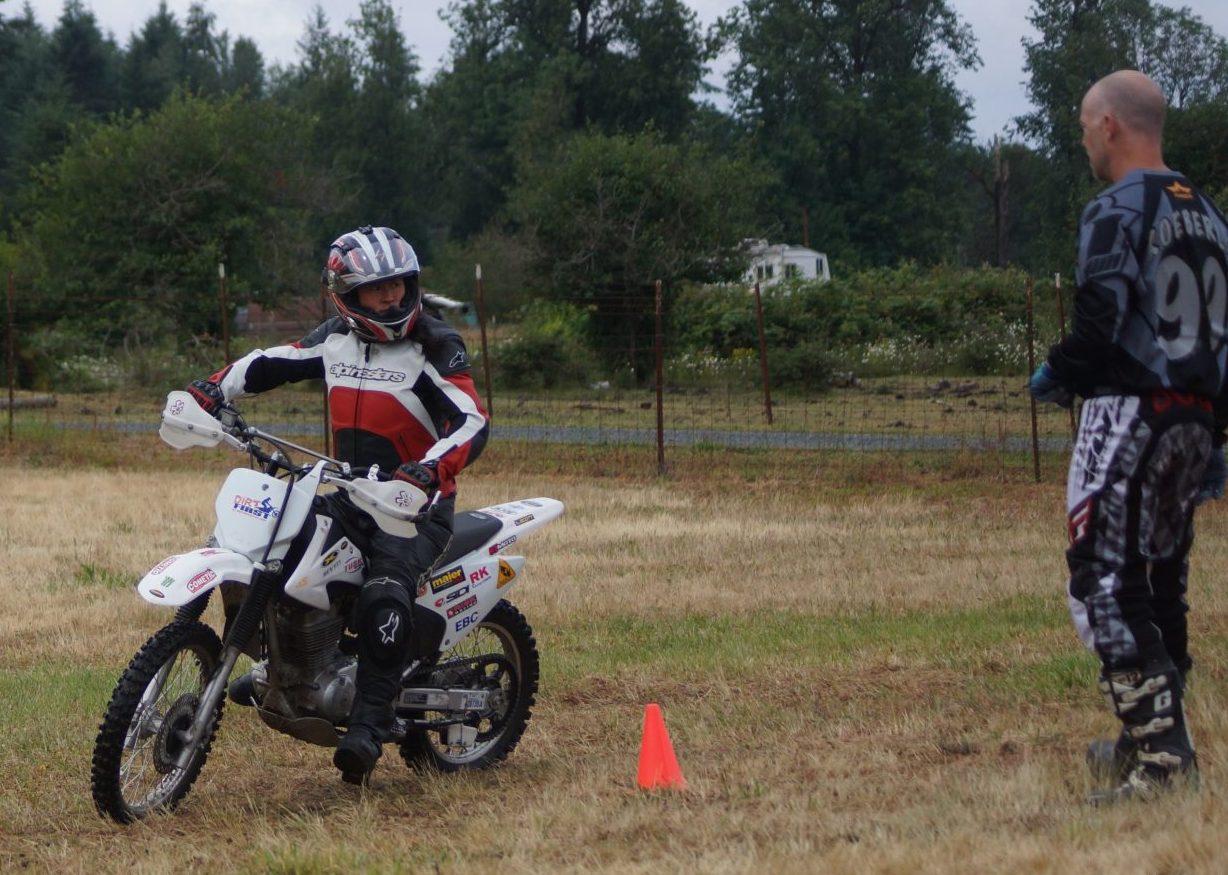
BY LOW-RYDA
Off-road training can make the difference between barely surviving and truly thriving off-road. Welcome to the first in a series of articles where Women ADV Riders will be reviewing various rider training programs and interviewing their staff.
Dirt Bike Safety Training Level 1 Review
Imagine getting a brand new motorcycle and taking it to an off-road training where you get to learn to brake slide, counterlean, and hop logs. Last spring, 7 days after purchasing my DR650, I headed to Dirty Girls Spring Camp to up my off-road skills.
Dirt Bike Safety Training is run by Jason Sherman and Whitney Koeberle. They have an outstanding property in Washington State, but will also come to train at any location. They have an option of renting bikes or bringing your own. In this training, there were women on all sizes of bikes from xr100’s to DR 650’s. Jason and Whitney encourage learning on small bikes, but are flexible and capable of teaching skills on big adventure bikes.
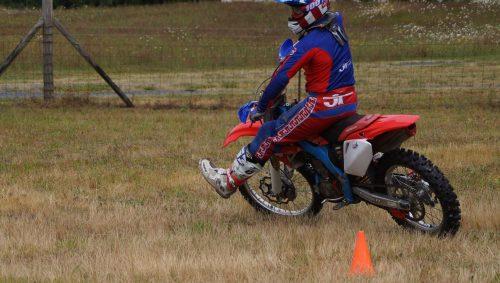
Training was about six hours long, and Jason and Whitney first took time to get to know the students, help with gear, and make sure the bikes are a good fit. The exercises included foundational skills for dirt riding; sitting, standing, turning, cone weaves, brake slides, and log hops. Each exercise was first described, then demonstrated, and then practiced. The curriculum utilizes some very helpful demonstrations over the course of the day. To illustrate how effective counter-leaning is, Jason helped a student get into perfect form, and then used one finger to hold up her motorcycle.
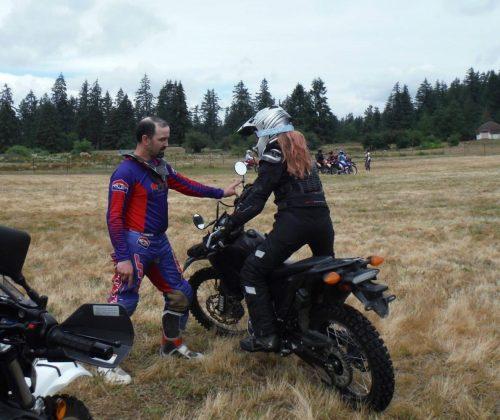
In another exercise, we were taught to “dipsy-do”, which is working on timing a knee dip and throttle roll to hop over an obstacle from almost standing still!
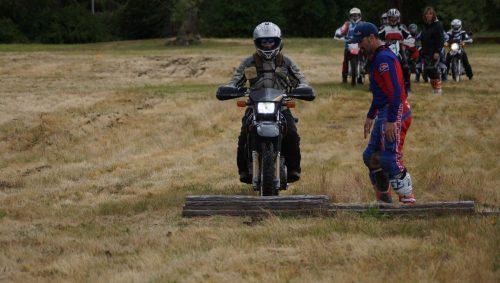
Each exercise was presented, and we were then given time to practice with individualized feedback until we were replicating perfect form. At the end of the day, there was an obstacle course, practicing tight turns, cone weaves, and counter-leaning on a hill to give us real-life practice on how these skills apply on the trail.
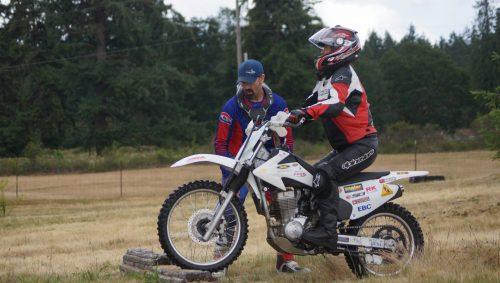
If you live in the northwest or are visiting the northwest, I highly recommend taking a class from Dirt Bike Safety Training. Jason and Whitney are both great riders, excellent instructors, and wonderful people. Their good humor shines through in their classes, and their encouragement, targeted feedback, and extensive time practicing each skill will sharpen the skills of any rider wanting to improve their off-road technique.
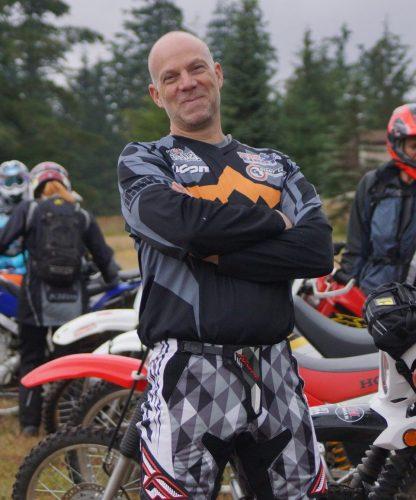
Interview with Whitney Koeberle, DBST
How is off-road training helpful for adventure riders?
The big secret about riding adventure bikes off-road is knowing the bikes and their own personal limitations. Twin cylinder adventure bikes can be twice the weight or more of a traditional dirt bike, especially when loaded.
That extra weight translates into more momentum that you need to manage when slowing down or entering corners. This can be especially daunting when descending a twisty, single lane mountain road.
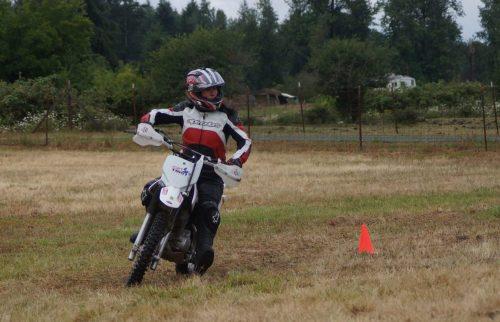
Picture yourself going down a hill, approaching a left hand corner, rock wall on the left side of the road, blocking your line of sight, and a drop off on the right. You can’t cut into the left “track” because you can’t see if there there is oncoming traffic or other hazards. You need to stay in the right hand track which is usually lined with “marbles”, four to six inches deep. Loose gravel gets pushed to the outside of turns. There’s no traction for slowing down or turning, and you’re headed for that drop off.
I get the question all the time, “How do you deal with this situation?” My advise is to scrub your speed before you get to the corner, stay in the right track, and “late apex” the turn, maximizing your line of sight. Once you’re around the corner and can see the path is clear, you can safely accelerate out of the corner.
Another important skill is learning to properly counter balance the bike in low speed corners. Everything must be done in moderation, because once you start to lean an adventure bike, it wants to keep going. This is an important skill to master and can take a lot of practice.
What’s your teaching philosophy?
We believe in continuing education. The more training and proper practice, the better. There’s a three step process with most of our exercises. We explain the exercise, demonstrate it, and then have the students do it. We talk about why the skill is useful and when it should be used.
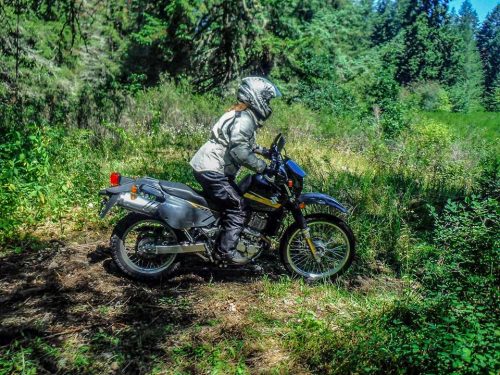
Do you offer women’s only classes, and if so, what differences do you notice in single gender classes vs. mixed gender classes?
We do offer women’s only classes and they have been quite popular. We find that women are often more open minded and willing to learn than men (sorry guys!). There seems to be more camaraderie in an all women’s class versus a coed class. The fun factor tends to be a little higher as well.
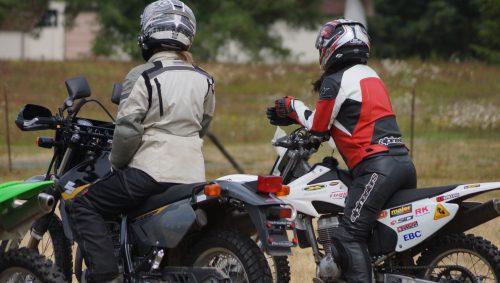
What makes your training unique? How are you different from the other off-road training?
We take the time to find out what motivates the student, and what their goals are for the class. We feel that our MotoVentures DirtFIRST curriculum sets us apart from the others because of the way the exercises strategically build on one another. Our curriculum provides the rider the skills they need to ride safely, effectively, and efficiently off-road.
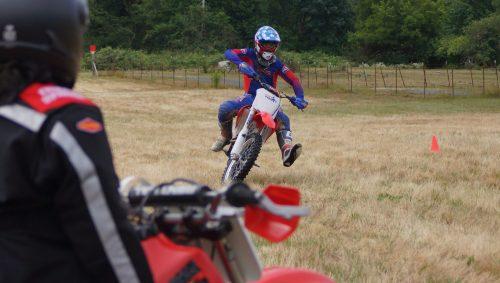
Highs and Lows
Highs of DBST Level 1: Clear demonstrations, positive feedback, enthusiastic teachers, willingness to travel anywhere in the northwest for your group, customized instruction, consistent training techniques, immediate progress
Lows of DBST Level 1: A second day of trail riding with our trainers would really help me apply the skills, but the venue described didn’t offer that option
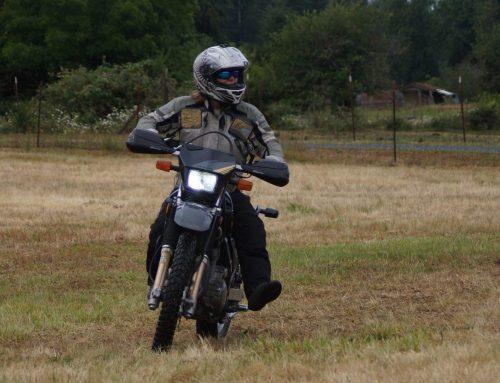
Your Field Tester
Low-Ryda
Height: 5’2”
Gender: Female
Experience Level: Intermediate Dirt Bike, Beginner Big Bike
Bike: Suzuki DR650
Class Level: 1
Structure: All women’s classes with 6 hours of training
For More Info
Dirt Bike Safety Training (DBST)
School Location: Pacific Northwest, USA
http://www.dirtbikesafetytraining.com/
